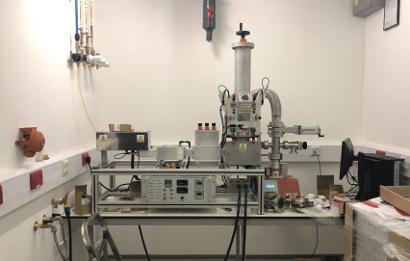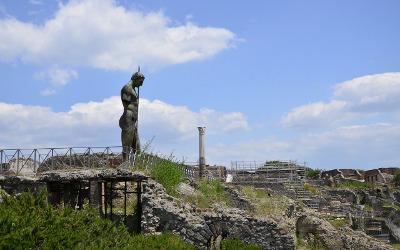New bespoke industrial microwave to investigate building on the Moon

An OU researcher has created a bespoke industrial microwave to melt simulants of 50-year-old soil from the Moon to see if the microwave heating method is possible to fabricate building components on the Moon.
Dr Sungwoo Lim, OU Research Fellow in Space Sciences, has taken a lunar simulant called JSC-1A, developed by NASA and the Johnson Space Centre which mimics soil formed by ancient volcanic eruptions on the Moon, and is heating it in the bespoke microwave to see if microwave energy and lunar soil could provide an adequate foundation to develop an extra-terrestrial construction method and material on the Moon.
In a presentation on Thursday 23 May at the 7th European Lunar Symposium 2019 at the Museum of Science and Industry, Manchester, Dr Lim will describe the microwave heating behaviour of lunar soil through a computational simulation and lab experiment using a lunar simulant, and discuss the possibility of lunar dust and soil forming the basis of lunar construction materials. He will also explain why the microwave heating method is more appropriate than other methods, including solar and laser sintering to fabricate industrial scale of construction components on the Moon surface environment.
“We can heat lunar simulants beyond its melting temperature using the bespoke industrial microwave at The Open University, which is like a kitchen microwave but is capable of withstanding higher temperature and supporting a vacuum condition. Because the Apollo Mission brought less than 400 kg of lunar soil only, it is highly precious. So, researchers like us who are conducting destructive experiments need to use lunar simulants.” said Dr Lim.
“This experiment, once completed, will tell us whether microwave and lunar soil are useful to fabricate construction elements such as pavement, dust protection wall and a (micro)meteorite cover, which can protect astronauts from the potentially hazardous environment so that they can continue their mission on the Moon. If successful, we could develop a microwave sintering-based 3D printing technique as part of an extra-terrestrial construction process to support permanent settlement on the Moon and Mars.”
This project is one of the OU Space Science’s Strategic Research Areas (SRA) – Space Architecture research, which focuses on the theory and practice of designing and building an environment for humans in outer space.
Dr Lim joined the OU in 2013 from Loughborough University, where he developed a world first large scale 3D Concrete Printing system for building construction components, including curvy cladding panels, using concrete on Earth. He will apply some of these techniques in future Moon experiments.
“Once we do have a proof of concept on the Lunar soil using the bespoke industrial microwave, then we will try to send another device to the surface of the Moon with the help of ESA and carry on more dedicated experiments there.” Dr Lim added.
Quarterly Review of Research
Read our Quarterly Review of Research to learn about our latest quality academic output.

Contact our news team
For all out of hours enquiries, please telephone +44 (0)7901 515891
